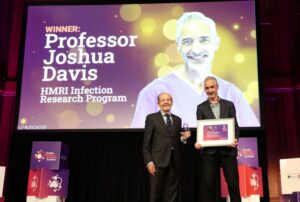
Humanity’s ambitious plans to colonize Mars have received a significant boost following a groundbreaking discovery by scientists. Both NASA and SpaceX, led by Elon Musk, have outlined their intentions to send humans to the Red Planet in the coming years. SpaceX, in particular, has been working closely with NASA to develop the technology needed to make Mars habitable, with their Starship rockets recently completing their 11th test launch.
The announcement comes as scientists have made a crucial advancement in food production technology, a key hurdle in making life sustainable on Mars. Recent developments have enabled astronauts to produce yeast using their breath, thanks to NASA’s creation of ‘space yeast.’ This innovation is poised to be instrumental in overcoming the challenges posed by Mars’ extreme environment.
Space Yeast: A Game Changer for Mars Colonization
At the heart of this breakthrough is a process where water, yeast starter, and air are combined in a machine to produce a ‘protein shake-textured yeast.’ This can be transformed into staple foods like pasta or tortillas, offering a potential solution to the food production challenges on Mars. The concept was first introduced at the 2023 Deep Space Food Challenge, but its viability in Mars’ harsh climate remained uncertain until now.
Between the planet’s high radiation levels, frequent shock waves, and extreme temperatures, the survival of food sources has been a significant concern for scientists. However, a new peer-reviewed study published in PNAS Nexus has revealed that yeast can indeed survive under Martian conditions.
Scientific Study Validates Yeast’s Resilience
The study subjected Saccharomyces cerevisiae, commonly known as Baker’s yeast, to conditions mimicking those on Mars. These included exposure to shock waves, akin to those caused by asteroid impacts, and perchlorates, toxic chemicals prevalent in Martian soil. Remarkably, the yeast withstood shock waves of 5.6 Mach intensity and 100 mM sodium salt of perchlorate, conditions representative of the Martian environment.
When exposed to these stresses, yeast, like humans and other organisms, forms ribonucleoprotein (RNP) condensates, structures composed of RNA and proteins. The study found that under the influence of shockwaves and perchlorate, the yeast produced RNP condensates.
This study, a first of its kind, highlights the importance of RNP condensates in understanding the impact of Martian conditions on life in general. This study paves the way for using RNP condensates as a biomarker for assessing the health of life forms during space explorations.
Implications for Future Mars Missions
The authors of the study emphasize the significance of these findings in demonstrating the potential for life to endure extraterrestrial conditions. While SpaceX and NASA’s plans to establish a human presence on Mars by 2040 may seem ambitious, this research indicates that humanity might be closer to achieving this goal than previously thought.
Meanwhile, the collaboration between SpaceX and NASA continues to evolve, with both entities focusing on overcoming the myriad challenges associated with Mars colonization. The ability to produce food sustainably on Mars is a critical component of these efforts, and the recent yeast study represents a pivotal step forward.
As the scientific community continues to explore the possibilities of life on Mars, this discovery not only advances our understanding of biology in space but also brings the dream of a human colony on Mars one step closer to reality. The next few years will be crucial as researchers and engineers work to translate these findings into practical applications for future missions.




